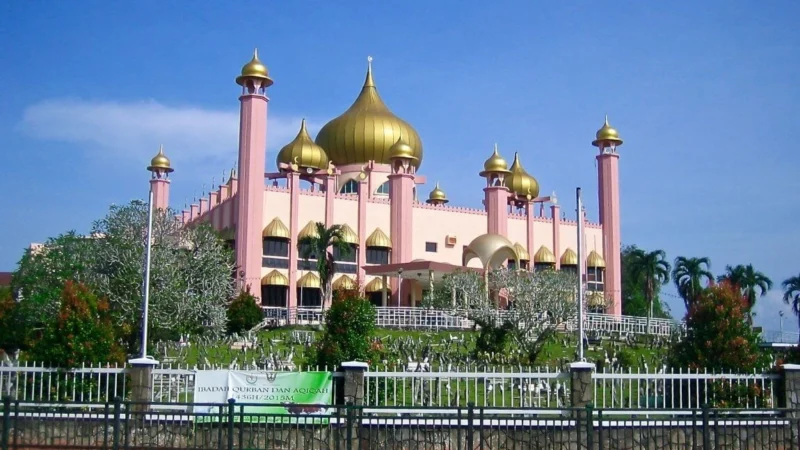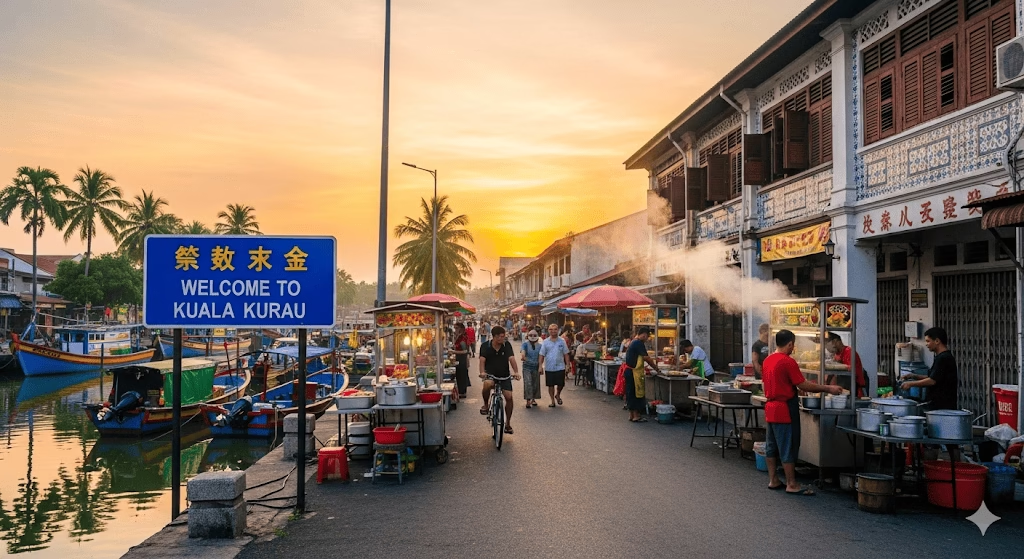Masjid Bahagian Kuching (Masjid Bandaraya Kuching) Sarawak

Introduction
Masjid Bahagian Kuching, popularly known as Masjid Bandaraya Kuching, stands as one of the most historically significant mosques in Sarawak, Malaysia. Nestled along Jalan Datuk Ajibah Abol in Kampung No. 3, Kuching, this grand mosque once served as the state mosque of Sarawak before the establishment of a new one in Petra Jaya.
Overlooking the scenic Sarawak River, it continues to be a beloved religious and cultural landmark that beautifully captures Kuching’s Islamic identity and architectural evolution.
Historical Background
The story of Masjid Bahagian Kuching dates back to 1840, making it one of Kuching’s oldest mosque sites. The original mosque was established by a local leader appointed by the Brunei Sultanate, known as a Pangeran. Initially, it was a humble wooden structure situated on a small hill beside the river, long before the arrival of the White Rajah, James Brooke.
As Kuching developed into a thriving trading town in Borneo, the local Muslim population expanded rapidly. Recognizing the need for a larger place of worship, Dato’ Patinggi Ali initiated a community fundraising drive in 1847 to construct a bigger mosque. Dato’ Patinggi Haji Abdul Gapur was later appointed as the first Imam.
In 1880, when modern building materials such as brick and cement became available, the mosque underwent major renovations. A landmark upgrade came in 1932, when the Brooke government collaborated with local Malay leaders to add a high drum-pointed dome—a striking architectural feature that became symbolic of Kuching’s skyline.
By the 1950s, the need for a larger mosque resurfaced. With the support of Malaysia’s first Prime Minister, Tunku Abdul Rahman, construction for a new mosque began in 1966. He laid the foundation stone and secured federal funding for the project. The new structure was completed in 1968, marking a new era in Kuching’s Islamic history.
Architectural Design
The Masjid Bandaraya Kuching is a fine example of modern vernacular Islamic architecture, influenced by Mughal design elements and constructed under the Public Works Department (JKR)’s modular typology of the 1960s.
Key Architectural Features:
- Golden Onion Dome: The mosque’s main golden dome, made from lightweight metal, symbolizes the grandeur of the main prayer hall.
- Smaller Domes and Minarets: Four smaller domes and six attached minarets, each topped with elegant cupolas, surround the central dome.
- No Detached Minaret: Unlike most mosques, it does not feature a separate minaret, emphasizing a compact and modern design.
- Modernist Façade: The exterior includes crenellated parapets and moon-crescent finials that blend tradition with modern geometry.
- Natural Light: The interior is passively lit through glass windows and louvered blocks, creating a serene ambiance for worshippers.
Inside the mosque, the qibla wall is adorned with teak wood tiles inscribed with the 99 Names of Allah, while the mihrab niche and timber minbar add warmth and authenticity to the prayer hall.
Location and Setting
Masjid Bahagian Kuching enjoys a strategic riverside location along the Sarawak River, right at the edge of Kuching’s historic town centre. Surrounded by traditional shop houses, commercial areas, and cultural landmarks, it serves as both a spiritual sanctuary and a visual anchor of the city.
- Address: Masjid Bahagian Kuching, Jalan Datuk Ajibah Abol, Kampung No. 3, Kuching, Sarawak, Malaysia
- Accessibility: Easily accessible from the city centre by car, taxi, or even on foot from nearby landmarks.
- Nearby Attractions: Kuching Waterfront, Main Bazaar, and traditional Malay kampungs along the riverbanks.
Visitor Information
- Visiting Hours: Open daily for prayers and visitors (outside prayer times).
- Dress Code: Visitors should dress modestly in respect of Islamic customs.
- Facilities: Main prayer hall, female prayer gallery, ablution areas, parking space, and shaded entry pavilion.
- Best Time to Visit: Early morning or late afternoon for peaceful reflection and scenic views of the Sarawak River.
Cultural and Religious Significance
Beyond its architectural beauty, Masjid Bandaraya Kuching holds immense spiritual and cultural importance. It symbolizes the enduring presence of Islam in Sarawak and serves as a unifying place for the city’s Muslim community.
Its design and location embody the harmony between faith, heritage, and urban growth, making it not only a place of worship but also a living monument of Kuching’s history.
Conclusion
Masjid Bahagian Kuching (Masjid Bandaraya Kuching) stands as one of Sarawak’s most cherished landmarks—an enduring representation of Islamic devotion, architectural evolution, and community unity. From its humble beginnings in the 19th century to its majestic form today, it remains a must-visit destination for anyone exploring Kuching’s rich cultural heritage.















Comments are closed.